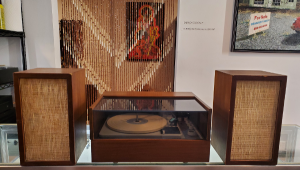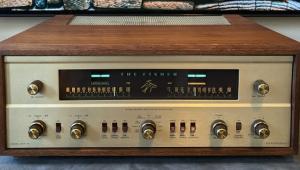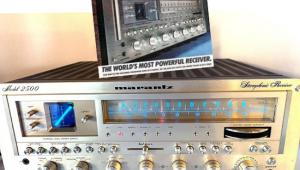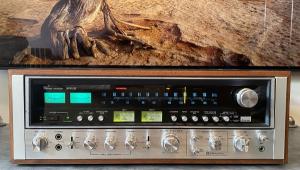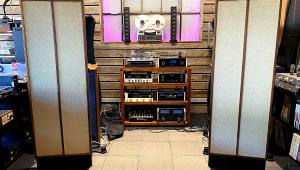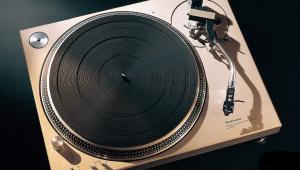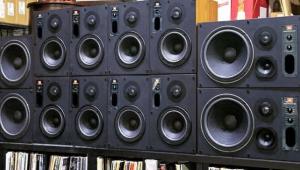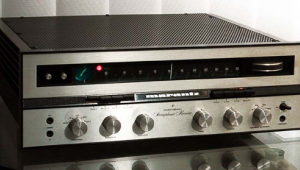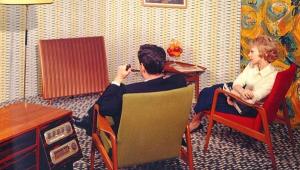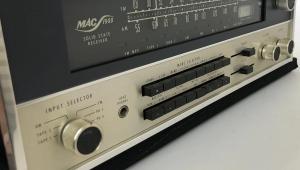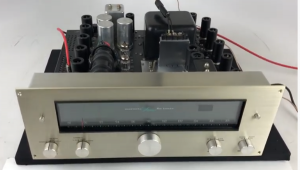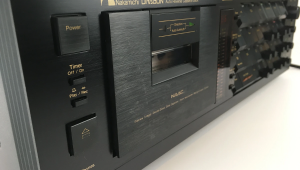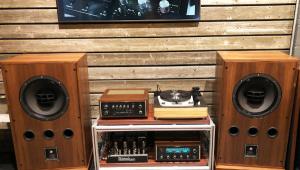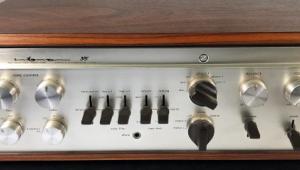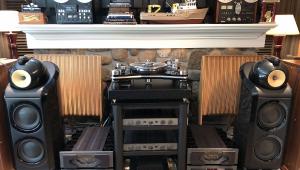Thank you for that stroll down amnesia lane! :-)
Nakamichi Dragon Cassette Deck
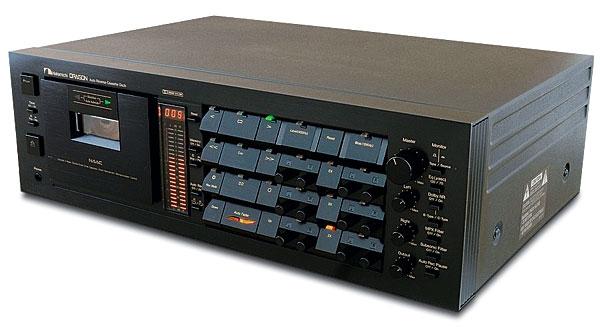
With a tape speed of 1 7/8 inches per second, the cassette wasn’t initially considered a high-fidelity format, but thanks to the fierce competition among cassette-deck manufacturers, sound quality advances quickly elevated the format’s status. Nakamichi emerged as the uncontested king of the hill when it built the world’s first three-head machine in 1973. That deck, the 1000, had separate playback, record, and erase heads, and some owners thought it sounded as good as the better open-reel tape machines. While Nakamichi may have looked like an overnight sensation in the U.S., the company was founded in 1948 in Tokyo, Japan. In 1982, it raised the ante yet again with the Dragon, the ultimate consumer-cassette machine.
The feature that made the Dragon the new plus ultra deck was its Automatic Azimuth Correction technology. With this technology, all tapes—even prerecorded ones—were played in perfect alignment to ensure accurate and airy, high-frequency response (and for both “sides” of the tape). The Dragon’s downside was that its record bias settings weren’t automated, as they were on many other high-end decks. The Dragon required hand tweaking to optimize recording quality. But if you got it right, it was really right. Nakamichi’s tape transport mechanism used different sized diameters (and, hence, rotational speeds) for the two capstans and flywheels to ensure the smoothest possible tape movement over the record and playback heads. To deal with tape hiss inherent with the Compact Cassette format, the Dragon had Dolby B and C noise reduction, but Nakamichi never added the more advanced Dolby HX Pro.
Priced at $2,499, the Dragon was targeted at serious high-end clientele. It was discontinued in 1993 after an 11-year production run. Used Dragons still regularly show up on eBay and go for $600 to $1,000.
- Log in or register to post comments

I love the Vintage Gear write-ups. Thanks Mr. Guttenberg.

I've owned several super Nackamichi products including a Dragon. I would buy a new LP, tape it on the Dragon and then put the record away and never touch it again. Today I have some quality vinyl in pristine condition andt I’m still playing the tapes.
One of the coolest Nak cassette decks however, was a hi end car deck that instead of reversing the tape to play the B side, would eject the cassette, flip the cassette and then re-insert the cassette automatically.
The thinking was that azimuth alignment was easier to maintain if the tape always went in the same direction. Truthfully you couldn’t really tell in a car but it did amaze my friends.

I know I'm very late in my blog here. I just discovered this article.
Actually, Dolby HX Pro wasn't a more advanced noise reduction system. It was a successor to the original Dolby HX system that was designed to increase the tapes capacity to reproduce high-level treble. Nakamichi was the only manufacturer that did not adopt this circuit. Although I've heard a professional reviewer once state that the company's products didn't need the assistance of such a circuit, I learned years later that the company engineers did not find the HX Pro system optimum in practical use.
By the way, anyone interested re-visiting the Dragon in detail in the pages of Stereo Review can look for the April 1983 and March 1988 issues on eBay or at a library. The 1988 issue includes a head-to-head comparison between the Dragon with other top-of-the-line cassette decks: Tandberg TCD 3014A, Revox B-215, Onkyo TA-2090 (with dbx), and a Harman Kardon CD 491.
